
Caribou
Mount Revelstoke National Park
Quick facts
Eats grasses, shrub leaves, herbs, mushrooms, lichen
Weighs 100 to 210 kg
Sounds include snorts and clicks of the tendons in their feet
Lives 8-15 years
SARA status: Threatened (2003)
COSEWIC reccomended status Endangered (2014)
Woodland caribou in the Columbia Mountains have declined significantly over the last few decades, and their decline is a sign of large-scale change in the local ecosystem. These caribou, as well as other herds in the Columbia and Rocky Mountains, belong to the southern mountain population of woodland caribou and are listed as a Threatened Species under Schedule 1 of the Species at Risk Act (SARA).
Mount Revelstoke and Glacier national parks protect significant examples of the world’s only temperate inland hemlock-cedar rainforest in the Columbia Mountains. The lush old growth forests of this area support a rich diversity of plant and animal species, and are essential to woodland caribou survival. These two national parks are not large enough, however, to protect habitat for wide-ranging species like caribou from the increasing pressures of land use in this region.
Update: the Columbia South Caribou herd
Since winter 2021-2022, the Columbia South Caribou herd, known to use habitat in Mount Revelstoke and Glacier National Parks, is down to one remaining female caribou. On her own, the caribou has a low chance of survival and no chance of having calves. Parks Canada and partners in the Revelstoke Complex and Central Selkirks Caribou Technical Working Group (RCCSC), recognizing the potential risks associated with translocation, recommended moving her to the Central Selkirk maternity pen near Nakusp BC. The maternity pen, operated by the Arrow Lakes Caribou Society, is monitored with veterinary support, and reduces the risk to the caribou following capture and relocation.
The caribou was successfully translocated on March 28, 2023, in collaboration with the Province of BC and is in good health. She will remain in the maternity pen, a 6.6-hectare enclosure (most sports fields = 1 hectare), for the next few months to acclimatize to the new surroundings. There are also 9 other female caribou and their calves in the pen. In summer, all caribou will be released into the Central Selkirks herd range. The decision to translocate this caribou was a difficult one. The Columbia South herd is now extirpated (no caribou remain in the herd’s range) and we recognize this may cause a sense of grief for some people.
The challenges facing caribou recovery are numerous and our success will depend on our ability to work together and create innovative solutions. The Columbia South and Central Selkirks caribou herds belong to the southern mountain population of woodland caribou listed as a Threatened Species under Schedule 1 of the Species at Risk Act. The Revelstoke Complex and Central Selkirks Caribou Technical Working Group representatives including seven First Nations, provincial and federal governments are collaborating on a regional approach to caribou recovery. Parks Canada’s long-term goal is to support broader regional caribou recovery to ultimately see a return of caribou to the Columbia South range.
Where they live
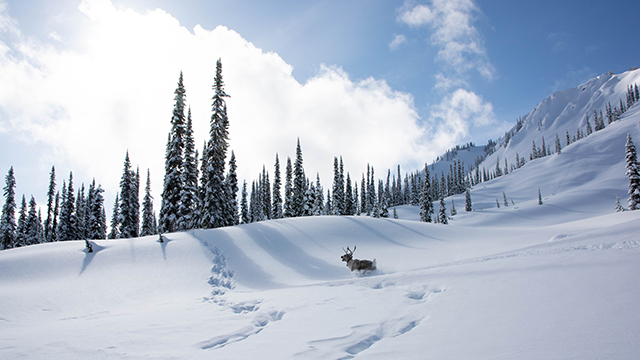
Southern mountain caribou range includes habitat in Mount Revelstoke, Glacier, Jasper and Banff national parks. The Revelstoke-Shuswap local population unit is made up of three caribou herd ranges. Mount Revelstoke and Glacier national parks make up a small part of one of these ranges, the Columbia South.
Caribou are highly adapted to snow and cold weather. Their insulating coats and large hooves allow for travel through deep snow. The southern group of woodland caribou are distinct from other populations in how they have adapted to the mountain climates. In the wet Columbia Mountains climate, they migrate in early winter to easier foraging at lower elevations, where the thick rainforest canopy reduces the amount of snow on the ground. By mid-winter they migrate up to the subalpine forest, where the deep snow pack allows them to reach lichens growing high on trees and makes travel for predators like wolves more difficult. In early spring they descend to the valley bottoms again to feed on fresh growth, and return to the high alpine meadows for the summer.
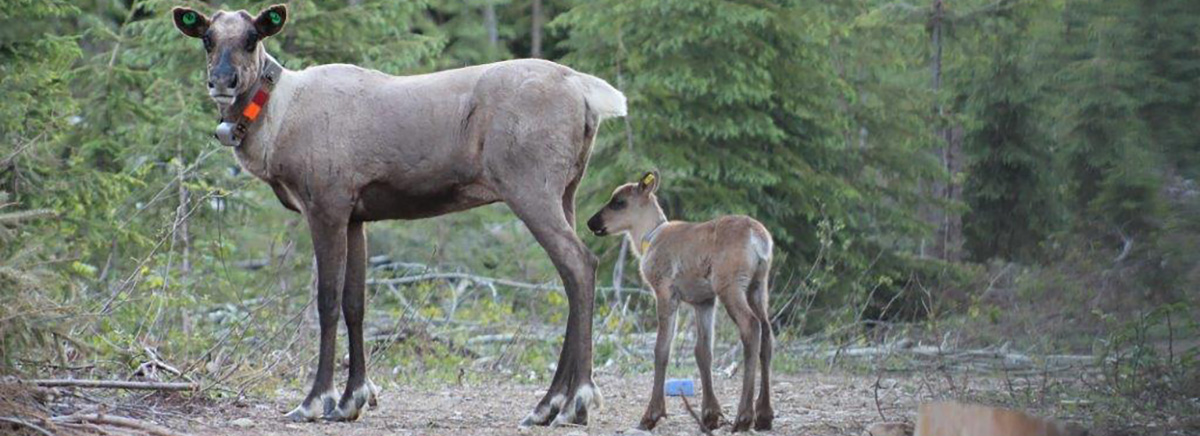
Why they are at risk
The main cause of caribou decline in the Revelstoke area is habitat loss. Changes to their habitat affect their ability to avoid predators. With low reproductive rates, caribou cannot easily recover from increased predation. In the late 1800s, the completion of the railway accelerated pressures on woodland caribou populations. These pressures included loss of habitat through hunting, resource industries (forestry, mining, hydroelectric reservoirs) and transportation corridors.
Habitat Loss
Caribou rely on old growth forests as their primary winter habitat. As habitat is removed or becomes unsuitable, caribou populations dwindle. Since the 1970s, damming and logging have reduced old growth forest habitat at low elevations. Forests are also becoming more vulnerable to insect outbreaks and wildfire as a result of climate change and historical fire suppression.
The younger forests that emerge after these disturbances favour deer and moose, which support increased predator populations. This increases the chances that caribou will encounter predators.
Altered predator-prey dynamics
The primary reason for declining mountain caribou populations in the last century has been changes to the numbers and distribution of other prey like moose and deer, and predators like wolves. This is often caused by human activities that disturb or change a landscape, such as industrial development.
Predator-prey relationships within protected areas like national parks can also be impacted by human activities on neighbouring lands, given the large ranges of the species involved.
Human disturbance
Backcountry recreation in the Columbia Mountains is increasingly popular. More human presence can disturb caribou, who may perceive humans as potential predators. This pushes them out of prime habitat, increasing their exposure to avalanche risk and predators, as well as forcing them to use more energy to find food in areas away from humans.
Predator access
Caribou have evolved to survive in the deep snow that drives predators to lower elevations where prey are easier to find and hunt. In the Revelstoke area, the main caribou predators are wolves, cougars and wolverines. Winter trails packed by snowmobiles, skiers and snowshoers make it easier for wolves to travel into otherwise inaccessible areas and prey on caribou.
Small population effects
Small herds are especially vulnerable to predators, disease, and accidents like avalanches. Caribou are well adapted to living in harsh environments but the trade off for their survival strategy is a low reproductive rate. This makes them more vulnerable when their populations get too small. 2022 census results suggest that only one caribou remains in the Columbia South herd, down from approximately 100 animals in 1994. The herd is now too small to recover on its own without human intervention.
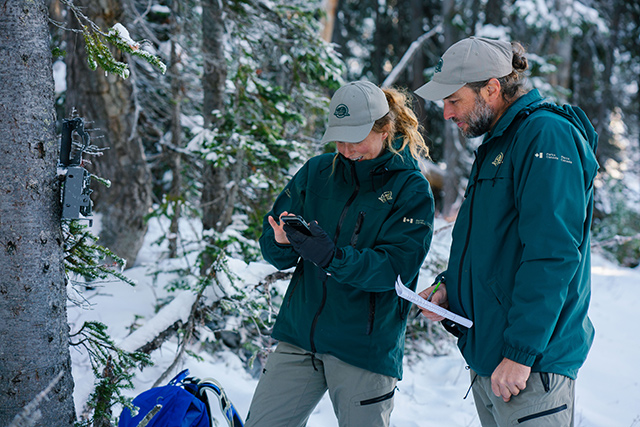
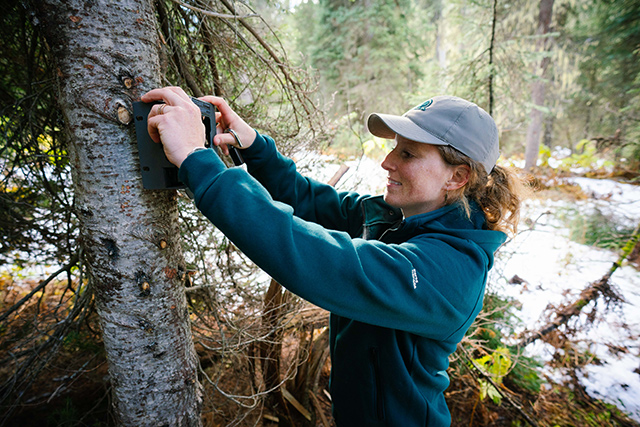
Recovery in action
Conservation and recovery is being planned at a landscape-level to protect the remaining Revelstoke-Shuswap caribou herds, support population increase, and ensure that suitable habitat is available in their traditional ranges. Revelstoke-Shuswap population increases could support the reestablishment of the Columbia South herd and requires continued collaboration with provincial and local stakeholders. The province of BC is currently leading a herd planning process for the Revelstoke-Shuswap population, and Parks Canada is engaged and coordinating recovery efforts with the province and Indigenous partners.
The following actions are being coordinated between Parks Canada and the province of BC to protect caribou both inside the parks and on adjacent Crown land:
Habitat protection
- Inside the parks, critical habitat for caribou is protected by law under Canada’s Species at Risk Act. The national parks provide a large protected area of secure habitat for caribou, where disturbance and habitat fragmentation are minimized.
- Parks Canada assesses projects in the park to prevent impact to caribou and their habitat. Fire management plans for both parks identify the protection of caribou habitat as a top priority.
Increasing populations
- Parks Canada is working with the province of BC and Indigenous peoples to develop a plan to increase the populations of the Revelstoke-Shuswap herds.
Research and monitoring
- Parks Canada and the province of BC collaborate on caribou population monitoring. Census flights are conducted in the winter to estimate population size. The province of BC publishes the results of caribou population monitoring estimates.
- Parks Canada has established a remote camera network throughout the parks and on adjacent provincial land. The cameras capture images of caribou, their predators and other species such as deer, moose and elk. This data will assist in population recovery planning.
Preventing human disturbance
- Area closures are used to prevent recreational activities from disturbing caribou. Since 2020, Parks Canada has been monitoring the location of a female caribou using a GPS collar. The data is used to close areas temporarily and prevent visitors from coming into contact with caribou.
- Helicopter and drone use for park operations follow guidelines that keep them away from wildlife. Drone use by the public is rarely permitted through a permit and special conditions are enforced to prevent disturbance to caribou are enforced.
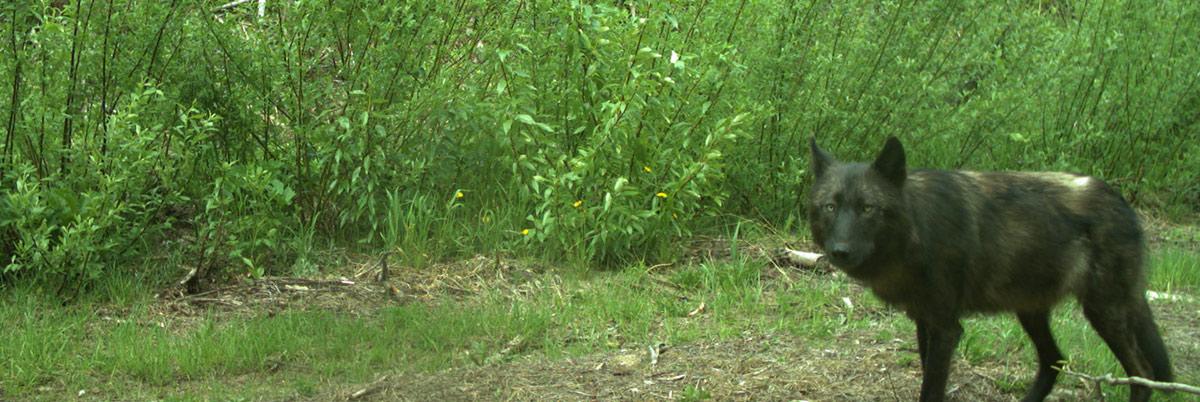
What can you do?
Learn more about woodland caribou
- Read the Multi-species action plan for Mount Revelstoke and Glacier national parks.
- Stop by the Rogers Pass Discovery Center and check out the interpretive display on Caribou!
Winter
- Be sure to check for seasonal closures in Glacier National Park or Mount Revelstoke National Park before heading out to the backcountry. Areas of the parks may be temporarily closed to prevent disturbance to caribou.
- If you observe caribou in the parks, report the sighting to Jasper dispatch (1-877-852-3100) OR email mrg.wildlife@pc.gc.ca with the details.
Summer
- Stay on designated trails. If you see caribou, give them at least 100m of space. Although caribou may seem unconcerned or even curious, your presence could cause them to abandon sources of food or push them closer to predators.
- Keep your dog on leash in national parks - it’s the law. Leashing your dog prevents it from chasing after wildlife like caribou.
Learn more
- Date modified :